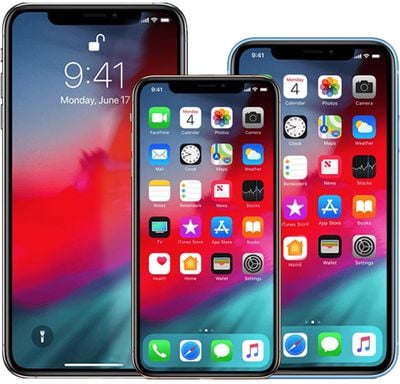The three iPhones expected to launch in 2020 will feature support for 5G, according to a new note to investors shared today by Apple analyst Ming-Chi Kuo and obtained by MacRumors.
Kuo originally said that two of the three new iPhones coming in 2020 will support 5G, but now believes that Apple will offer 5G in all models to better compete with lower-cost Android smartphones that will support 5G. Kuo also says that following Apple's acquisition of Intel's smartphone modem chip business, Apple has more resources for developing the 5G iPhone.

We now believe that all three new 2H20 iPhone models will support 5G for the following reasons. (1) Apple has more resource for developing the 5G iPhone after the acquisition of Intel baseband business. (2) We expect that the prices of 5G Android smartphones will decline to $249-349 USD in 2H20. We believe that 5G Android smartphones, which will be sold at $249-349 USD, will only support Sub-6GHz. But the key is that consumers will think that 5G is the necessary function in 2H20. Therefore, iPhone models which will be sold at higher prices have to support 5G for winning more subsidies from mobile operators and consumers' purchase intention. (3) Boosting 5G developments could benefit Apple's AR ecosystem.
Kuo says that he expects all three new iPhone models coming in 2020 to support both mmWave and Sub-6GHz spectrum to meet the requirements of the American market, but it is not clear if Apple will launch a 5G iPhone that only supports Sub-6GHz, which would allow for a lower price. He says Apple may not have enough development resources for such a project.
Apple may have the intention to launch the 5G iPhone, which only supports Sub-6GHz, to gain market share by lowering the cost/price for markets which only support Sub-6GHz (e.g., Chinese market). However, 5G iPhone, which only supports Sub-6GHz and the version which supports mmWave & Sub-6GHz are regarded as different projects even though they share the same form factor design.
For those unfamiliar with 5G networks, there are actually two different kinds of 5G. mmWave technology is the super fast 5G that's most often talked about, but not all 5G networks are going to use mmWave technology in all areas because it's best suited to denser urban areas.
In rural and suburban areas, 5G technology will be on mid-bands and low-bands, called sub-6GHz 5G. It's still faster than 4G, but not as fast as mmWave. When 5G finishes rolling out, there will be some areas with mmWave technology where data transfer speeds will be lightning quick, coupled with other more expansive areas that are closer to 4G LTE speeds.
Over time, low-band and mid-band 5G speeds should also get much quicker, but at launch, won't be as fast as mmWave, which is most often in the spotlight.
Apple is planning to use modem chips from Qualcomm in its 2020 5G iPhone lineup, despite its recent acquisition of Intel's smartphone modem chip business. Apple is working on its own modem chips, but that technology isn't going to be ready until 2021.
Along with 5G technology, the 2020 iPhones could be available in new sizes. In a previous note, Kuo said that Apple is going to release 5.4 and 6.7-inch high-end iPhones with OLED displays along with a 6.1-inch model with an OLED display. More information on what to expect in the 2020 iPhones can be found in the dedicated what's next section of our 2019 iPhone roundup.























